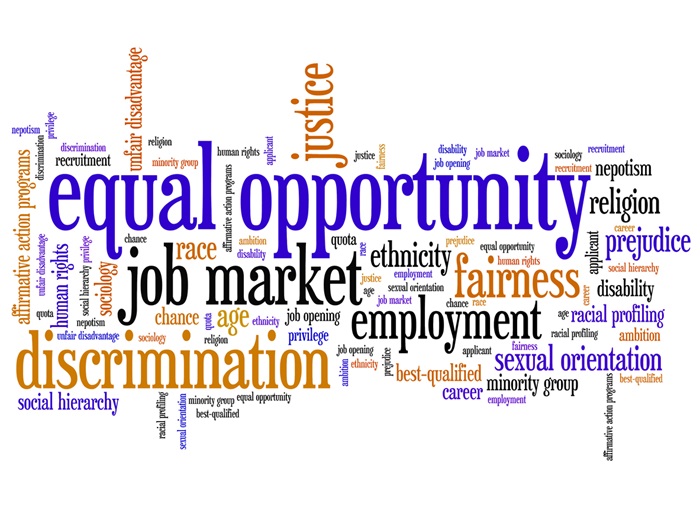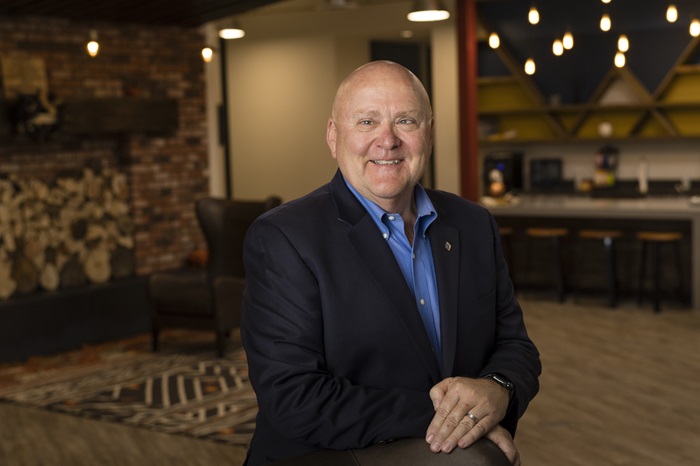Fairness Versus DEI? You Can and Must Have Both
By Chris Benguhe, RaeAnne Marsh and Elaine Pofeldt | September 12, 2024 8:32 am
Business models focused on creating equality of opportunity rather than on equality in outcome should not be seen as threatening to DEI but an effective method of implementing it.

This month we are featuring some amazingly inclusive CEOs who are focusing on the ultimate DEI strategy, and what they have to say about that can offer some insight on how the rest of us can do the same. (Image: Bruce Emmerling/ Pixabay)
The word “fairness” appeals to everyone, right? Except that everything in our cultural landscape nowadays seems to inspire controversy.
That was rather unexpectedly the case when we set out to write this article and asked CEOs to include their thoughts on how to implement fairness of opportunity. Amazingly, that scared some leaders away from commenting. How can that possibly be?
We were a bit flabbergasted by that, to be honest. Especially since our whole intention was to clear out the clutter on the subject and talk about what matters the most to us at the Center for Social Capital: people, and how business can best serve and respect them. For us, fairness was a triangulation of recent thoughts on the topic rather than an opposition to one side or the other.
So maybe a little retrospective of where we are and how we got here is in order if we want to figure out a positive way forward. The effort to increase diversity, equity and inclusion (DEI) has been an important part of our culture in this country for decades ever since the introduction of equal opportunity laws and affirmative action practices back in the 1960s. The common goal was to widen the pool of talent and prosperity. But, as with all the things, the devil — or God — is in the details. Since there has never been a real agreement on how to achieve that goal, different approaches have yielded extremely different responses and results.
Subsequently, as humans are too often apt to do, some want to throw the baby out with the bathwater. And DEI has recently come under fervent attack, with some companies declaring that DEI is anathema to business, egged on by activists like Roby Starbuck who are pushing companies to abandon their DEI initiatives entirely.
That’s in spite of a ton of research out there that shows diverse teams add value and potential to a company, as well as increasing profitability. So, what’s the problem?
We contend that it’s the implementation not the object or intention that has caused the issue. In other words, maybe there is a problem with how some companies may interpret and practice DEI through metrics and quotas that actually wind up excluding and ostracizing rather than including and promoting true diversity or having a wide range of people and perspectives represented and true equity, the definition of which is actually “being fair and impartial.” Aha! There’s that nasty word again: fairness.
Here’s some corroboration from pretty reliable sources. According to Gallup, only 28% “strongly agree their organization is fair to everyone.”
An improperly understood or implemented DEI can be a serious contributor to that problem, according to Andrea Carter, an adjunct professor of organizational psychology at Adler University and the CEO and founder of Belonging First, a consulting firm that advises companies on how to refine their DEI initiatives.
“When models fail to distribute accountability and responsibility effectively, collective behavior will uphold toxic environments,” contends Adler.
However, she continues, “To be fair, not all organizations have fallen into these traps. Those with leaders that adopted a more contemporary understanding of power and bias have developed more effective strategies for employees to thrive. My research suggests that for DEI initiatives to succeed, respect and fairness must be present.”
And Gallup agrees, taking the stance in its latest report to actually define equity as “fair treatment, access and advancement for each person in an organization.”
We propose that means we don’t need to get rid of DEI. To the contrary, we just need to make sure we do it right or fairly.
So, this month we are featuring some amazingly inclusive CEOs who are focusing on the ultimate DEI strategy — fairness of opportunity — and what they have to say about that can definitely offer some insight on how the rest of us can do the same.

“I want Fidelity to tap into the power of our differences by looking for associates with diverse backgrounds and experiences and ensuring that our culture welcomes them and creates an environment where everyone thrives.” —Abigail Johnson (Image: Alessandro Biascioli / istock)
Abigail Johnson, Chairman & CEO at Fidelity Investments
At Fidelity, we believe that diversity is a business imperative. A company that has associates with diverse backgrounds and experiences is in the best position to thrive.
Supporting our employees in a way that allows individuals to bring their whole selves to work each and every day is one of the most important things we can do. This includes supporting women in the workplace. Fidelity established its Women’s Leadership Group Employee Resource Group years ago. The WLG’s mission is to help women and Fidelity thrive. The group’s goals are to provide development opportunities to members with a focus on “developing the whole you — professional, personal and financial.”
Women are a critical part of the future of financial services. We want more women to consider our industry and Fidelity for their careers, and we are committed to providing benefits and programs to enhance our culture that will help us to develop and retain our women leaders.
Examples of these benefits and programs include generous paid parental leave (16 weeks; six weeks spousal), paid leave to care for a loved one (four weeks), student loan repayment program and flexible work options, and backup daycare. In addition, our RESUME return-to-work internship offers an opportunity for people to accelerate their career path despite time away from the workforce. Fidelity is one of only a few companies offering a program that offers this kind of path with a specific focus on licensing in the financial advisor space.
By 2044, there will be no ethnic majority in the U.S. and, women are surpassing their counterparts in levels of education and workforce participation. In addition, innovation is happening at a rapid pace and companies need to be constantly incubating new ideas. I want Fidelity to tap into the power of our differences by looking for associates with diverse backgrounds and experiences and ensuring that our culture welcomes them and creates an environment where everyone thrives.
Paul Knopp, Chair & CEO at KPMG US
[We are] accelerating diversity and equity in our workforce through fairness across our talent management systems and processes, as well as market-level representation of underrepresented talent on key account teams and leadership.
When I think about inclusivity and equity, I believe it is important to help everyone at work feel comfortable. In today’s world, you need more equity and inclusion to make sure that talent can rise to the top of the organization. We spend a lot of our time talking to our people about the importance of those values. What’s important to us is the recognition that a lot, if not all, of what we accomplish as an organization is accomplished in a team environment. Therefore, [we have] to ensure that people know what it means to live the value of together and for the better. That is critically important to the success of the organization. We set out to achieve certain strategic diversity, equity and inclusion objectives for 2025 and, while there are headwinds right now around DEI efforts, the business imperative hasn’t really changed. What I mean by that is that, for our business to be sustainable in the long term, we need to ensure that everybody in the organization experiences more equity of opportunity. It’s just fact that the demographics of the country are changing. The white population is flat or declining. The people of color in the country, their populations are growing. Sixty percent or more of new college enrollees are women. We need to recruit from the talent that’s there, and that means we need to be more diverse moving forward.
We’re also going to retain more diverse talent and create more equity of opportunity, which means we’ll have more diverse, underrepresented individuals in leadership, ultimately, so that we truly do look more like America.
Bob Sternfels, Global Managing Partner at McKinsey & Company, along with colleagues Tracy Francis, Anu Madgavkar and Sven Smit
In inclusion, we consider equality of opportunity and broad-based progress of outcomes for all — especially sufficiency of living standards — and the narrowing of inequalities among genders, ages, ethnicities, family backgrounds and places of residence.

“The goals of sustainability, inclusion and growth can reinforce each other and create a virtuous circle.” —Bob Sternfels (Image: Tupungato / istock)
The positive spillovers of inclusion are indisputable and well documented: greater workforce participation, higher creativity, more capital allocated to children’s needs. However, poorly conceived measures to boost inclusion can have unintended negative consequences that can include distorted product markets, reduced investment or faster environmental depletion. For example, in developing economies, free or highly subsidized nonvolumetric pricing of electricity used to pump water can lead to groundwater depletion.
Efforts to achieve equality can also backfire if they become a box-ticking exercise or a quota-driven program, which may fail to address the root causes of inequality. As a result, the goal of achieving a fairer workplace or society may not be achieved, and outcomes may even worsen for certain groups.
When it comes to achieving sustainable, inclusive growth, it is crucial first to fully recognize both the reinforcing as well as the counteracting loops. Then the conversation must move from agreeing on the targets — for who would not agree to such a tantalizing vision? — to understanding how to solve the tough problems that stand in the way. For our part, we have put our hypotheses on those problems at the top of our research agenda and look to learn even more from the leaders of the global organizations we work with who are “making a dent in the universe” through sustainable, inclusive growth. We hope that the ways in which we’ve sketched out the forces and counterforces here contribute to our collective understanding. With that, it may be possible to start to move toward a sustainable and inclusive and growing global economy.
The goals of sustainability, inclusion and growth can reinforce each other and create a virtuous circle. More inclusive healthcare could add half a point to global GDP growth by 2040. Advancing women’s economic potential in the workforce could add $13 trillion to global GDP growth. And growth rates for sustainable products and markets outstrip conventional ones 10 to 20 percent in all categories.
Driving all three — sustainability, inclusion and growth — won’t be easy and there are some real tensions that need to be addressed. As technology is implemented at an ever-faster rate, one hundred million people will need to be reskilled this decade. And energy transitions, if we don’t focus on inclusion, will be regressive. If I take the U.S. alone, 60% of low-income households face severe energy burdens, meaning they spend more than 10% of total household income on energy. Just transitions have to be a crucial component as we think about climate transition.
And I think we all know, as business leaders, that 40% of our workforce right now wants to change jobs in the next six months. The regulatory environment is increasingly uncertain, and we have multiple stakeholders to manage. If we want to be bolder, all these things have to come together.
Michael Brady, Founder of Organic Food Incubator and Operating Partner at Southeast Acquisition Capital
Fairness of opportunity in the workplace means creating an environment where every individual, regardless of their background or circumstances, has access to the resources, training and support they need to succeed. Whether it’s through inclusive hiring practices that eliminate traditional barriers to employment or through providing equal access to benefits and career development opportunities, the goal is to ensure that everyone has an equal chance to thrive using their specific set of skills and capabilities. It’s about focusing on the potential of each person and providing the tools necessary for them to contribute and grow within the organization.
At Greyston Bakery, we developed an open hiring model that ensured everyone had a fair chance at a job. By removing traditional barriers like background checks, education requirements, work experience and interviews, we sought to level the playing field and provide opportunities to anyone who came to the front door of the bakery. However, fairness of opportunity doesn’t stop at hiring. It requires a sustained commitment to providing the necessary support — like training, development and social services — to help individuals succeed and thrive within the workplace.
I am currently energized to be part of the employee ownership movement that is driving a significant shift toward more equitable wealth distribution in our economy. The acceleration of businesses adopting models like ESOPs, perpetual purpose trusts and worker cooperatives ensures that the benefits of success are shared fairly among those who contribute to it. This approach empowers employees by giving them a stake in the company’s success and promotes long-term stability, making fairness of opportunity not just a principle but a practice that supports a more equitable economic system.
Fairness of Opportunity / Fairness of Outcome
Fairness of opportunity is about giving everyone the same chances to succeed, while fairness of outcome would imply that everyone ends up with the same results. In business, it’s critical to recognize that people have different strengths, goals and ambitions, and that outcomes will naturally vary based on individual efforts and contributions. Our focus should be on providing the resources and opportunities that allow each person to achieve their best, while rewarding performance and results in a meritocratic environment.
The goal is to create an environment where everyone has the same chances of success, and where the outcomes reflect that equality. If the outcomes do not reflect that equality, then the onus is on leadership to make changes until they do.
The challenges to fairness in the business world today are complex and driven by a legacy of unfair practices that are deeply ingrained in most organizations. A simple explanation for the lack of progress toward fairness is inertia and a lack of courageous leadership. Inertia manifests as resistance to change and a preference for maintaining the status quo, even when the status quo weakens business performance. This resistance is often rooted in existing power structures and outdated business practices that disproportionately impact marginalized groups. Without courageous leadership willing to address these issues, biases in hiring, promotion and compensation will persist, undermining efforts to create a fair workplace.

“I am currently energized to be part of the employee ownership movement that is driving a significant shift toward more equitable wealth distribution in our economy.” —Michael Brady (Image: wildpixel/istock)
For businesses willing to embrace change, the opportunities to support fairness are significant. By adopting inclusive hiring practices, creating clear pathways for advancement and providing access to wealth accumulation, companies can foster a more equitable environment that benefits both employees and the organization. Research shows that these practices drive innovation, engagement, productivity and business success, making fairness not just an ethical choice but a strategic advantage. Companies that commit to fairness can attract and retain top talent, boost performance, and strengthen the communities they serve, creating a positive cycle of growth and equity.
Trent Griffin-Braaf, Founder of Tech Valley Shuttle and Roadmap to Success™️
Fairness of opportunity in the workplace is about creating an environment where everyone, regardless of their background or starting point, has access to the resources, support and development necessary to succeed. The idea is that every individual should be empowered to reach their full potential, not limited by systemic barriers or biases. Through the Roadmap to Success™ program, we focus on empowering historically underemployed populations — such as returning citizens, people with disabilities, new citizens and youth as we’ll as front-line managers for organizations — by providing them with the skills, coaching and community support needed to thrive together in corporate America. By doing so, we ensure that fairness of opportunity isn’t just a concept but a practice that leads to real, measurable change.
Fairness of opportunity and fairness of outcome are interconnected but distinct concepts. Fairness of opportunity is about leveling the playing field — ensuring that everyone has the same chance to succeed, regardless of their background. On the other hand, fairness of outcome refers to the results that emerge when opportunities are distributed fairly! However, in the business world, it’s crucial to recognize that fair outcomes can’t happen without fair opportunities. The Roadmap to Success™ program is built on the belief that by focusing on fairness of opportunity, we naturally move toward more equitable outcomes. By investing in coaching, career development and supportive environments, we help individuals overcome systemic barriers and achieve their potential, leading to outcomes that reflect their true capabilities rather than their starting point or, even worse, being forever judged for making a bad decision.
In my opinion, one of the greatest challenges to fairness in the business world today is the persistence of systemic barriers that prevent certain groups from accessing the same opportunities as others! Whether it’s a lack of access to quality education, limited opportunities or biases in hiring and promotion practices, these barriers stifle talent and innovation. Another challenge is the tendency to focus solely on metrics of variety without addressing the underlying structures that create inequities.
However, there are also significant opportunities to support fairness in business. The growing recognition of the value of variety perspectives is driving forward thinking leaders and companies to re-evaluate their practices and invest in programs that promote fairness of opportunity. This is where the Roadmap to Success™ program excels. By offering tailored coaching, skills training and support systems, we help businesses tap into underutilized talent pools and create workplaces where fairness of opportunity leads to a more dynamic, innovative and successful organization. Our program not only addresses the challenges of fairness but also transforms them into opportunities for growth and success.
Beth Ford, President & CEO at Land O’Lakes Inc.
Our industry is a broad and critical subset of our economy from the American farmer to businesses, such as the cooperatives I lead to the rural communities that both support and benefit from the success and strength of our food supply.
We’re focusing on the things that are most important to our members, their families and to their businesses. And from my perspective, I don’t get involved in politics. We don’t talk politics. We talk policies that are enablers for farmers, for the food supply.
Working together and including diverse voices and ideas is rooted in Land O’Lakes’ history as a cooperative. Our employees and our members need to always feel heard and valued for who they are.

“The Roadmap to Success™ program is built on the belief that by focusing on fairness of opportunity, we naturally move toward more equitable outcomes.” —Trent Griffin-Braaf (Image: wildpixel / istock)




